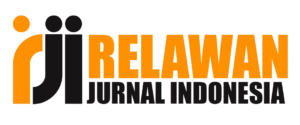Power Relations between Tuan Guru and Sultan in the Malay World: Source of the Tuan Guru Manuscript (TGM)
Abstract
This article examines the power relations between Tuan Guru and the Malay Sultans. Power relations are not only in relations between people and authority but relations that support and strengthen each other’s existence. This research raises how the power relations between Tuan Guru and the Malay Sultans were formed. The Tuan Guru Manuscript (TGM) written by Tuan Guru ‘Abd al-Wahhab Rokan was used as the main source to answer the research questions. This manuscript is important because it is Tuan Guru’s letter and notes to the Sultan of Langkat. The results of this research explain that the power relations formed between Tuan Guru and the Sultans have supported the spread of the Tarekat Naqsyabandiyah-Khalidiyah Babussalam (TNKB) in the Malay world. Then, power relations have also impacted the establishment of a tarekat village. It was supported by the Sultan by providing land and other supporting facilities.
Keywords
Full Text:
PDFReferences
Bruinessen, M.v. (2007) “Saints, Politics and Sufi Bureaucrats: Mysticism and Politics in Indonesia’s New Order”, Martin van Bruinessen dan Julia Day Howell, ed., Sufism and the Modern in Islam. London: IB Tauris & Co. Ltd, 103.
Bruinessen, M.v. (2007). “After the Days of Abu Qubays: Indonesian Transformations of the Naqshbandiyya Khalidiyah”, Journal of the History of Sufisme, 21 (5), 225-251.
Bruinessen, M.v. Tarekat Naqsyabandiyah di Indonesia: Survei Historis, Geografis dan Sosiologis. Bandung: Mizan, 114.
Dahlan, Z. (2020). “Ulama Tasawuf di Sumatera Timur Abad XIX dan XX: Menyingkap Jejak Tradisi Intelektual Syekh H. Abdul Wahab Rokan (1811-1926) dan Prof. Dr. H. Saidi Syekh Kadirun Yahya (1917-2001)”, Jurnal Ansiru PAI, 4 (2), 6.
Fuad, Z. (2002). “Dakwah Syekh Abdul Wahab Rokan: Suatu Tinjauan dari Sudut Metode Dakwah”, Thesis, SPs UIN Jakarta.
Hasjim, T. (tt). Riwajat Toean Sjeh Abdoel Wahab Toean Goeroe Besilam dan Keradjaan Langkat. Medan: H. Mij. Indische Drukkerij, 32.
Hidayat, Z. (2015).“Kekuasaan Spiritual dalam Kerajaan Tuhan: Struktur Sosial dan Otoritas Mursyid dalam Tarekat Naqsyabandiyah-Khalidiyah Babussalam (TNKB)”, Jurnal Medan Agama, 2, 1, 22-39.
Hidayat, Z. dan Syahrul Z. (2017). “Indonesian Sufi in Malay World: a Preliminary Exploration with Reference to Tariqa Naqshabandiyya-Khalidiyya Babussalam (TNKB)”, Journal of Indonesian Islam, 11, (1), 201-222.
Irham, M.I. (2010). “Pemikiran Sufistik Syekh Abdul Wahab Rokan”, Jurnal Lektur Keagamaan, 8 (2), 2010, 297-314.
Kraus, W. (1990), “Some Notes on the Introduction of the Naqshbandiyya-Khalidiyya into Indonesia”, M. Gaborieau, A. Popovic and Th. Zarcone, eds, Naqshbandis: Historical Developments and Present Situation of a Muslim Mystical Order, Istanbul and Paris: ISIS. 651.
Langenberg, M. v. (1985) “East Sumatra: Accommodating an Indonesian Nation within a Sumatran Residency”, Regional Dynamics of the Indonesian Revolution: Unity from Diversity, Audrey R. Kahin, ed., Honolulu: University of Hawaii Press, 113-144.
Lombard, D, (1986). “Les Tarekat en Insulinde”, Alexandre Popovic dan Gilles Veinstein, eds., Les Orders Mystiques dans L’islam: Cheminements et Situation Actuelle. Paris: l’École des Hautes Etudes en Sciences Sociales, 146.
Lombard, D. (1990).“Tarekat et Entreprise à Sumatra: L’exemple de Syekh Abdul Wahab Rokan (c.1830-1926)”, Marc Gaborieau, e.al., ed., Naqshbandis: Cheminements et Situation Actuelle d’un Ordre Mystique Musulman, Paris: Institut Français d’études Anatoliennes d’Istanbul, 707.
Mahyuddin, M.K. dan Stapa, Z, (2013). “Ahmad Al-Sirhindi’s Stations of Muraqabah in the Naqshabandi Order Taught by Wan Sulaiman Wan Siddik, A 19th Century Malay Scholar in the Malay World”, International Journal of Business and Social Science, 4, (6), 137-145.
Mohamad, A.M. (2003). “Tarekat Naqsyabandiyah Khalidiyah Pimpinan Tuan Hj Ishaq b. Muhammad Arif: Analisis Kritis terhadap Doktrin, Amalan dan Pengaruh Penyebarannya di Malaysia”, PhD Theses, Universiti Kebangsaan Malaysia.
Mohammad, A. M, (2012).“Tarekat Naqsyabandiyah Khalidiyah in Malaysia: A Study on the Leadership of Haji Ishaq bin Muhammad Arif”, Miqot, 36, (2), 299-319.
Mudawar, T. (tt). Sejarah Almarhum Waliyullah Qutubuzzaman Syeikh Abdul Wahab Rokan Tuan Guru Babussalam. n.p., n.d.
Munsoor, M.S. (2021). Wellbeing and the Worshipper: Insights Into an Islamic Spiritual Order, Switzerland: Springer Nature Switzerland AG, 143-144.
Perret, D. (1994). aniel, “De la Forêt Primaire Aux Plantations Coloniales: Les Deux Ruptures Politiques et Socio-économiques de la Côte est de Sumatra-Nord”, Bulletin de l’École française d’Extrême-Orient, 81, 177.
Perret, D. (1995). La Formation d’un Paysage Ethnique Batak et Malais de Sumatra Nord-Est, Paris: Ecole francaise d’Extrême-Orient, 162.
Said, A. F, (1983). Sejarah Syekh Abdul Wahab Rokan: Tuan Guru Babussalam, Medan: Pustaka Babussalam, 32.
Siregar, L.H. (2003). “Tarekat Naqsyabandiyah Syekh ‘Abdul Wahab Rokan Babussalam: Suatu Kajian tentang Ajaran dan Aktualisasinya dalam Kehidupan Sosial 1882-1926”, PhD Theses, SPs UIN Jakarta.
Siregar, L.H. (2011) “Tarekat Naqsyabandiyah Syaikh Abdul Wahab Rokan: Sejarah, Ajaran, Amalan dan Dinamika Perubahan”, Miqot, 35 (1), 59-77.
Zarcone, T. (2021). “Sufis Tombs and Convents”, Routledge Handbook on Sufism, Lloyd Ridgeon, ed. Abingdon: Routledge, 651.
Manuscript
Rokan, Tuan Guru ‘Abd al-Wahhab, “Tuan Guru Manuscript”, nd.
Interviewed
Atan, 50 year old.
Junaid, 72 year old.
Kahar, 48 year old.
Tajul, 75 year old.
DOI: http://dx.doi.org/10.30984/pp.v27i1.2369
Article Metrics
Abstract view : 549 timesPDF - 404 times
Refbacks
- There are currently no refbacks.
Copyright (c) 2023 Potret Pemikiran

This work is licensed under a Creative Commons Attribution-NonCommercial-ShareAlike 4.0 International License.
Statistic Journal Potret
Rumah Jurnal Institut Agama Islam Negeri Manado
Jl. Dr. S.H. Sarundajang, Kawasan Ringroad I, Malendeng Manado Kode Pos 95128, Sulawesi Utara, Indonesia.
All publication by Potret Pemikiran are licensed under a Creative Commons Attribution-NonCommercial-ShareAlike 4.0 International License.
Potret Pemikiran, ISSN 1693-1874 (Print), ISSN 2528-0376 (Online)




